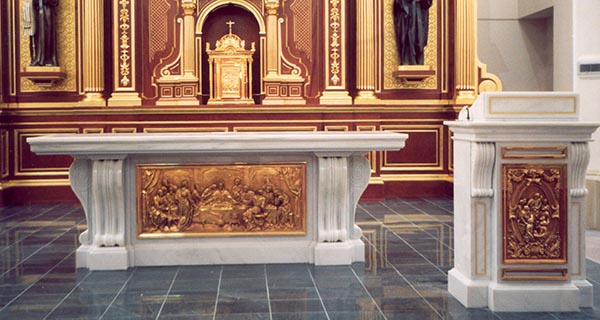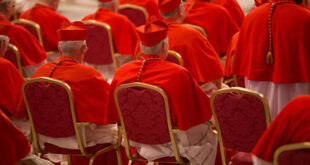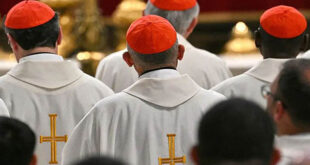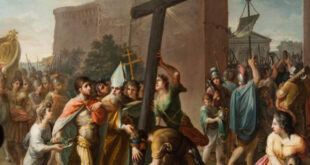In the vast and rich tapestry of the Catholic faith, the liturgy occupies a central place. It is where heaven and earth meet, where the divine and the human intertwine in an act of worship that transcends time and space. However, in recent decades, the Catholic Church has experienced a remarkable diversity in how it celebrates this sacred mystery. Two liturgical expressions have emerged as focal points of discussion and reflection: the Novus Ordo Missae (New Order of the Mass) and the Vetus Ordo Missae (Old Order of the Mass), also known as the Tridentine Mass. This article seeks to explore these two forms of liturgy, not to divide, but to enlighten, educate, and guide the faithful in their understanding and appreciation of the Church’s liturgical richness.
The Vetus Ordo: A Treasure of Tradition
The Vetus Ordo, or Tridentine Mass, is the form of liturgy that developed over the centuries and was codified at the Council of Trent (1545-1563) in response to the Protestant Reformation. This Mass, celebrated in Latin, is a living testimony to the continuity and tradition of the Church. Its prayers, gestures, and rhythms are imbued with a profound sense of the sacred, inviting the faithful to immerse themselves in the mystery of faith.
One of the most notable features of the Vetus Ordo is its ad orientem orientation, where the priest and the congregation face east together, symbolizing the expectation of Christ’s second coming. This gesture is not merely ceremonial; it is a proclamation of faith in the Church’s eschatological hope. Additionally, the use of Latin, though it may seem challenging to some, serves as a reminder that the liturgy is not simply a human gathering but an act of worship that transcends cultural and linguistic barriers.
Silence also plays a crucial role in the Vetus Ordo. It is not an emptiness but a space filled with divine presence, where the soul can encounter God in the intimacy of prayer. This silence is an antidote to the noise and distraction of the modern world, offering a refuge for contemplation and encounter with the eternal.
The Novus Ordo: A Response to the Modern World
The Novus Ordo Missae, promulgated by Pope Paul VI in 1969, emerged as a result of the Second Vatican Council (1962-1965). This council, convened during a time of rapid social and cultural change, sought to renew the life of the Church so that it could engage more effectively with the modern world. The Novus Ordo was designed to be more accessible and understandable to the faithful, with the celebration in vernacular languages and greater active participation from the congregation.
One of the most significant innovations of the Novus Ordo is its versus populum orientation, where the priest faces the congregation. This change was intended to foster a sense of community and participation in the liturgy. Additionally, the biblical readings and prayers were expanded to include a greater variety of texts, enriching the liturgical experience and emphasizing the centrality of the Word of God.
The Novus Ordo has also been praised for its flexibility, allowing cultural adaptations that make the liturgy more relevant to different contexts. However, this flexibility has sometimes been a source of controversy, as it has led to a variety of interpretations and practices that, in some cases, have diluted the sense of the sacred.
Unity in Diversity: The Heart of the Liturgy
Amid the differences between the Novus Ordo and the Vetus Ordo, it is crucial to remember that both forms of liturgy are valid and rich expressions of the same Catholic faith. The Church, in its wisdom, has allowed these two forms to coexist, recognizing that each has a unique role in the spiritual life of the faithful.
Pope Benedict XVI, in his motu proprio Summorum Pontificum (2007), emphasized that the Vetus Ordo was never abrogated and that the faithful have the right to celebrate the liturgy according to this form. At the same time, the Novus Ordo remains the ordinary form of the liturgy in the Church, and its faithful and reverent celebration is essential for the life of the Christian community.
Ultimately, the liturgy is not an end in itself but a means to encounter Christ, who is the center of our faith. Whether in the contemplative silence of the Vetus Ordo or the active participation of the Novus Ordo, what matters is that our hearts are open to God’s grace, which transforms us and leads us to a deeper communion with Him and with one another.
Conclusion: A Call to Reverence and Unity
In an increasingly secularized and fragmented world, the Catholic liturgy, in all its forms, is a beacon of hope and a reminder of God’s presence among us. Whether we attend a Tridentine Mass or a Mass according to the Novus Ordo, we are participating in the same sacrifice of Christ, offered for the salvation of the world.
As Catholic faithful, we are called to approach the liturgy with reverence, humility, and an open heart. We must strive to understand and appreciate the richness of our liturgical tradition, not as a source of division but as a testimony to the unity and diversity of the Church.
May the Blessed Virgin Mary, Mother of the Church, guide us on our liturgical journey, so that through the celebration of the sacred mysteries, we may be transformed into true disciples of Christ, ready to bring His light to the world. Amen.






